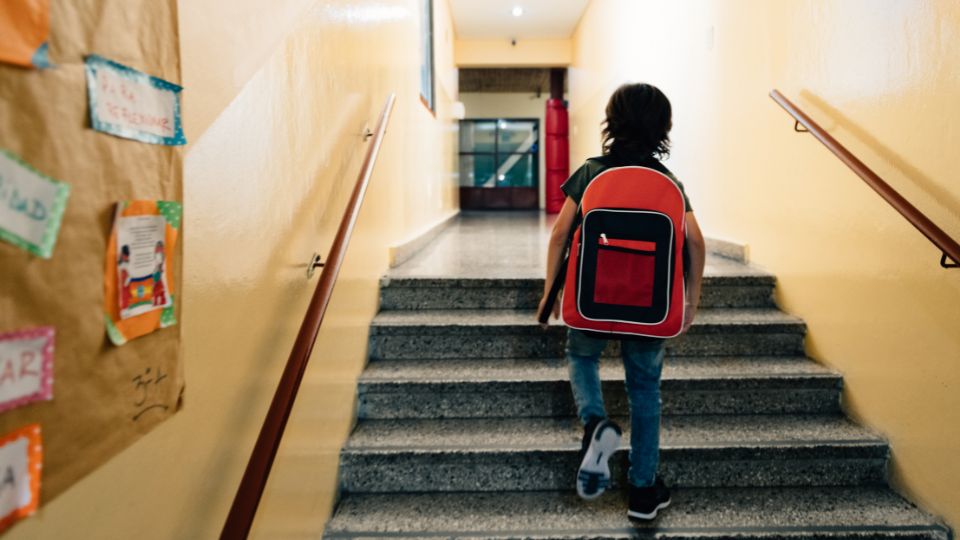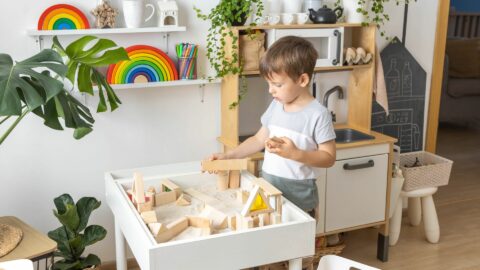Changes at school can be challenging for any child, but for autistic children, they can bring unique considerations and complexities. Whether it’s moving up a year, adjusting to a new teacher, or starting at a different school, these shifts can feel overwhelming and anxiety-inducing.
As parents, caregivers, and educators, our role is crucial in helping autistic young people navigate these changes safely so they can feel secure and thrive.
Get prepared early
Whenever you know a big change is on the horizon, or even a small change if it could have a significant impact, it’s important to prepare early.
Consider reaching out to your child’s school to discuss their specific needs, challenges, and strengths. Share what has worked in the past – for example, maybe you have used tools like visual aids or noise-cancelling headphones, or maybe you found them quiet spaces to decompress and reduce their anxiety.
Working collaboratively with teachers will not only help you identify suitable additional accommodations, but will also help to build positive relationships you can draw on for your child and allow school staff to feel confident in reaching out to you for advice too.
Don’t forget to ask your child’s current school or teacher to help prepare them for the transition too. They may be able to arrange activities to address worries and build confidence within a trusted learning environment.
Ease them into a new environment
Take things step-by-step to make the transition smoother. If they are moving to a new school or classroom, you could visit the space after hours when it’s quieter and less overwhelming. This allows your child to become familiar with the environment at their own pace.
Consider having a friend or peer with similar experiences show your young person around. They may be able to share helpful tips and insights, which could boost your child’s confidence. You could even speak to the school to see if they can arrange for peer support to continue in the classroom.
Gradually building familiarity could help your child to feel more comfortable and confident, leading to a positive start to this next chapter.
Use visual reminders to build confidence
Creating a transition book with pictures can help your child to prepare mentally. You can use a camera or smartphone to take photos of key places like classrooms, common areas, where they will eat, and anywhere school routines take place (such as assembly or lining up in the playground). Compile these pictures into a personalised book that your child can look at to reduce their anxiety and familiarise themselves with the new space.
Encouraging your child to ask questions, express concerns, and share any preferences will help them take a more active role in preparing for the change, and support them to feel more in control and able to advocate for themselves.
For teenagers, you can use technology for this. For example, you could ask the school’s permission for them to take videos of the school environment and important locations while it’s empty. Also explore the school’s website together to find information about their new teachers, like names, faces, and the subjects they teach.
Also consider guiding them in logging into school apps, learning platforms, or communications tools they’ll be asked to use, and also help them become familiar with any equipment they’ll need to carry with them, ensuring they are confident in handling it and they know where to find everything.
Work together and stay connected
Be your child’s champion. Share their strengths, successes, interests, and goals to help school staff really engage and support them. Also make sure to keep communication open and update the school of any changes or new needs your child may develop.
Working together and seeking feedback from teachers and support staff, helps to foster a strong partnership and a more personalised and comprehensive approach to supporting your child’s education.
Provide emotional support
You can support your young person by listening to them and validating their feelings. Engaging in open discussions about their worries and expectations, as well as finding solutions and coping strategies together, will boost their confidence in facing challenges.
Aim to strike a balance between serious conversations and activities they find enjoyable, making time for what recharges them, such as engaging in their special interest. This will help create positive memories and support their wellbeing.
Remember also to prioritise your own self-care and take time to enjoy school holidays as a family. Your needs matter too and by taking care of yourself, you will be better placed to support your child.
Further links and resources
- Transitions guidance – National Autistic Society
- School adjustments to enable autistic children to thrive – blog by Emily Katy
- Blog posts on mental health – autism unlocked





